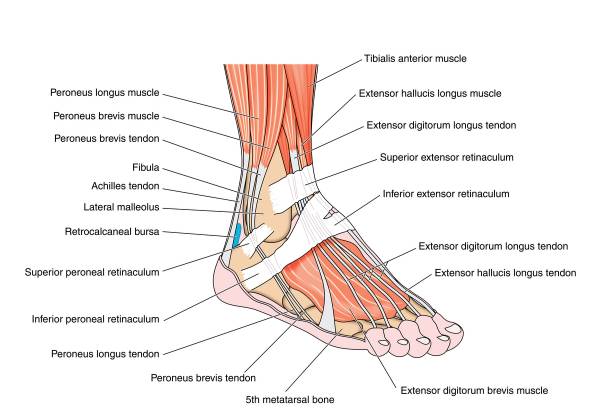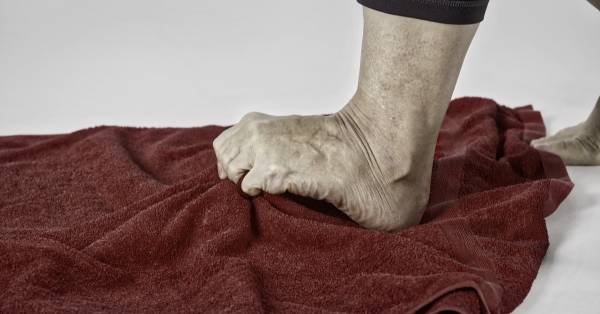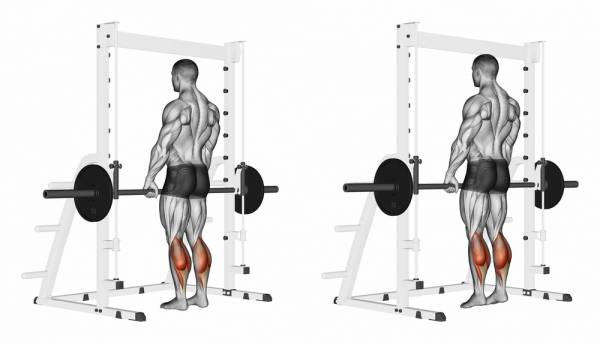Your feet are the foundation of your body and your movement. What happens at the ground floor level has repercussions throughout your body. Force and balance all start from the feet.
Your feet are the foundation of your body and your movement. What happens at the ground floor level has repercussions throughout your body. Force and balance all start from the feet.
If your feet are not strong enough or capable enough, the rest of your body has to compensate. So, essentially, your feet start the chain reaction for your movements and that chain reaction can be good, meaning strong, stable feet, or it can be not so good.
Knowing how important feet are, we want to address some of the protocols for assessing and strengthening the intrinsic foot musculature.
Antonio Squillante – Athleticism Starts From the Bottom of Your Feet
Would you throw an arrow with a broken bow? It might sound rhetoric but foot work – training the intrinsic musculature of the foot and the lower extremity but also improving first metatarsophalangeal (MTP) joint range of motion, tibiotalar and subtalar mobility and overall eye-foot coordination (an aspect of human Motricity that is quite often forgotten) – is a critical component of a well-round program designed to improve performance in sport.
Quoting one of the most influential mentors in my career, coach Robert Takano “athleticism starts from the bottom of your feet, the way you move them eventually determine how good of an athlete you can be”.
The plantar fascia, a deep layer of connective tissue creating an arch between the heel bone with the toes, represents the very first link in any (ANY) kinetic muscle chain involved in locomotor activities: walking, running, sprinting, but also jumping and landing, throwing, kicking and, despite the common beliefs, lifting weights. It is the bow that needs to be put under tension to throw the arrow farther away.

This “fascia”, that can be pictured as the bow rope, it is supported by a complex system of intrinsic muscle – the bow itself – who help to create tension to store elastic energy during the stretch-shortening cycle involving dorsi flexion and plantar flexion.
The potential energy that can be used to promote greater power output as soon as the musculature of the lower extremity- tricep surae in primis but also its antagonist muscles such as the tibialis anterior – comes into play create the “push off” that begins every (every!!!) activity involving bipedal locomotion.
The most effective way to train the foot intrinsic musculature is to develop it through its functional range of motion and in connection with the other muscles involved in providing a ground reaction force.
Exercise involving the powerful triple extension of ankle, knees, and hips such as jumps, hops, leaps but also weight lifting exercises such as the snatch, the clean and the jerk and many other athletic-like movements can be very effective in training the intrinsic musculature of the foot: emphasis should be placed on full exertion of the MTP joint (maximal heel raise while pushing off the ground) and quick coupling time between eccentric and concentric motion at the ankle.
Training in a situation of instability also provides a valuable resource to elicit that combination micro adjustment taking place almost instantaneously within the deeper muscle surrounding the planta fascia that is needed to correct the alignment of the foot with the lower extremity.
Take home message: a combination of power and balance training focus on proper ankle mechanics and full ROM is the best system to develop the foot intrinsic musculature.
Giulio Palau – Foot Stability Translates All the Way up the Kinetic Chain
The intrinsic foot muscles (muscles whose origin and insertion are both located in the foot and do not cross the ankle joint) are important for stability and control, and the structure of your feet will affect everything up the kinetic chain.
Many of us have weak or tight feet because we wear shoes the majority of the day, which can help compensate for a lack of stability in the foot, but also act as a major crutch.
The new trend in fitness is to train without shoes, but are your feet ready to shoulder the burden of barefoot training? Many lack the proper control of the intrinsic foot musculature to properly stabilize under load. Some may even suffer from high arches and an inflexible foot structure. In both cases, these deficiencies will be fairly self apparent to observe.
If the foot lacks stability, the arch will easily collapse (pronate) under the load of just your body weight. If the arch is high and tight, you will notice a lack of pronation during gait and you will probably feel some tightness and discomfort on the bottom of the foot, sometimes referred to as plantar fascists.
Both cases are two sides of the same coin, as a tight muscle is usually a weak muscle. In both cases I recommend you start with self myofascial release of the plantar fascia by rolling your foot over a lacrosse or tennis ball placed on the ground. Strengthening the foot musculature is more about activating the intrinsic muscles and building control in the relevant range of motion.
You can start by moving the toes in unison with flexion/extension and adduction/abduction exercises, before trying to control each toe individually (this may take a while, trust me). You may notice some cramping and fatigue in the arch of your foot as you exercise the toes. This will translate nicely into strengthening the arch of the foot, which can be easily done by performing toes curls with a towel on the ground.

As you get stronger, you can place a weight on the far side of the towel to add resistance. Also, try to develop some control in the arch during calf raises to integrate these principles into more compound movements. Think about trying to “shorten” the foot as you perform each calf raise.
Another tool to integrate your foot work into compound movements is to place a towel on the floor under your bare feet as you perform a multi joint exercise like the barbell squat. Try to grip the towel under your feet throughout the set to build stability.
Stability at the feet will translate all the way up the kinetic chain. Keep in mind that you should still wear shoes during demanding tasks while you are developing your arches. Once your feet are strong enough to maintain the integrity of the arch, then you can start to challenge yourself under load without shoes. Remember that the chain is only as strong as its weakest link!
Ted Sloan – Create Stability and Mobility in the Feet
I normally begin with having you perform your warm-ups for your training sessions without shoes on. I would have you progress to conducting nearly full strength sessions without shoes. When not training, it is important to practice controlling your toes and to be able to move them around in as many ways as possible.

Exercises such as toe raises, to train the anterior tibialis, can help to create more stability and mobility in the feet, especially once proper mobility is established.
The ankle joint, according to Mike Boyle, is intended to be mobile and should be able to achieve a dorsiflexed angle of 30-40 degrees. Using the toes to curl up a lengthened out towel while in a seated position can help to create strength in the muscles of the arch, can help to pull the arch up slightly for those with flat feet and can help to prevent plantar fasciitis.
The feet are the alpha of any movement; they are what initializes any intention and are also the area we spend the vast majority of our time using. We have a fascial line that connects to the bottom of our feet and links up to the top of her head. Any tightness or limitations created in the feet can consequently affect the entire chain.
Often times I will have you roll out your feet for as long as 5 minutes, multiple times a week, as homework. This can help to keep the feet and musculature connected, more limber and functional for greater periods of time. Soft tissue work, mobilization, and strength!






